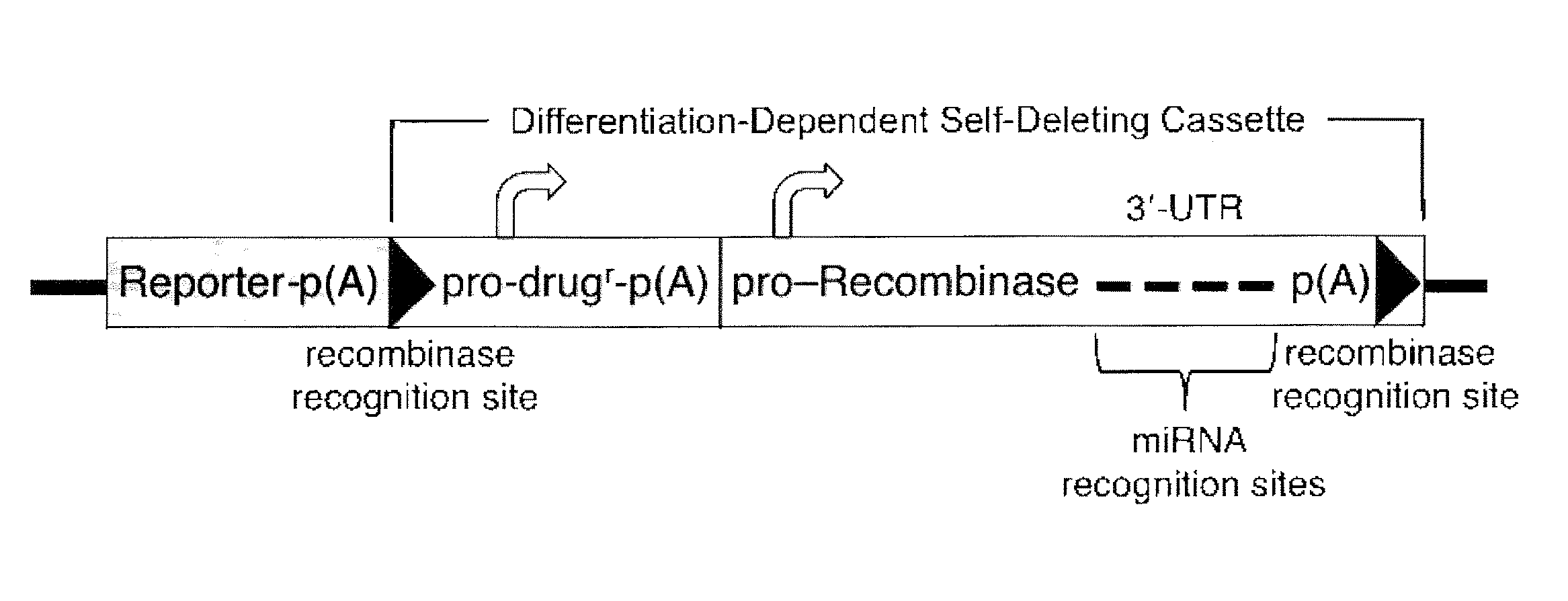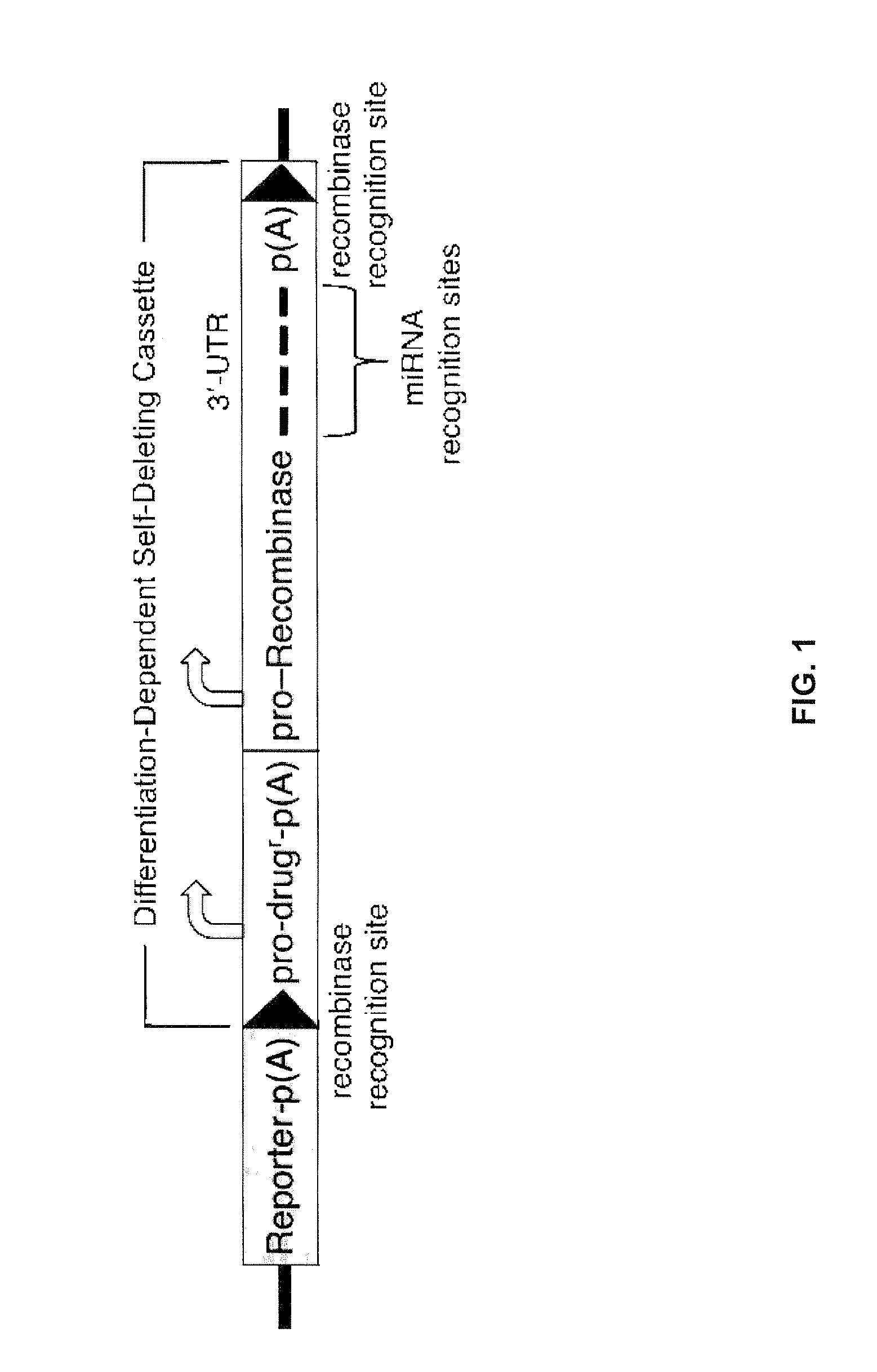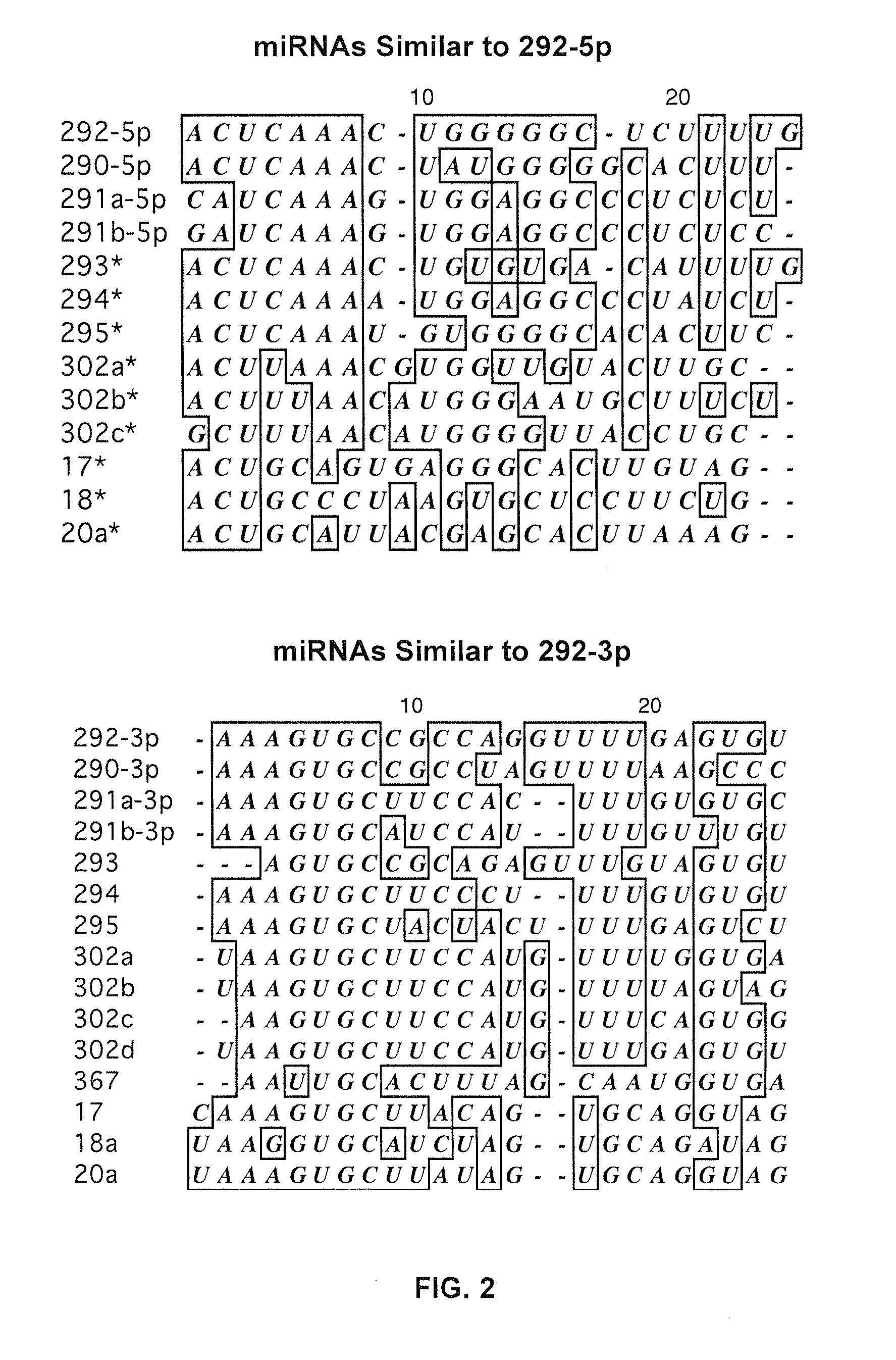miRNA-Regulated Differentiation-Dependent Self-Deleting Cassette
a cassette and mirror technology, applied in the field of nuclear acid constructs, can solve the problems of affecting the ability of targeted clone to transmit the modified allele through the germline, affecting the interpretation of the phenotype of the modified allele, and ineffective selection cassette excision by transient transfection of es cells
- Summary
- Abstract
- Description
- Claims
- Application Information
AI Technical Summary
Benefits of technology
Problems solved by technology
Method used
Image
Examples
example 1
miRNA Abundance in VGB6 and VGF1 ES Cells
[0103]Abundance of miRNAs in mouse ES cell lines VGB6 and VGF1 was determined by microarray analysis. Briefly, small RNAs were purified from the ES cells, labeled, and used to probe Agilent miRNA arrays. Abundance readings from array analysis are expressed as hybridization signal intensities.
[0104]The twenty most abundant miRNAs are shown based on triplicate readings for VGB6 and for VGF1 in Table 2.
TABLE 2ES Cell miRNA Microarray Abundance AnalysismiRNA Abundance(avg., n = 3)miRNAVGB6VGF1miR-292-3p111769127534miR-295103566117946miR-29498411116437miR-291a-3p8547899872miR-2937341811048miR-72047419107611miR-12244117319402miR-19b2886837820miR-92a2772229698miR-130a2297421864miR-20b1867725450miR-961621812988miR-20a1565420744miR-211542729023miR-142-3p103697152miR-709100783117miR-466e-3p96458797miR-18387147346
[0105]The microarray abundance analysis revealed that the top ten abundant miRNAs (ranked by VGB6 abundance) fell largely within the miRNA-290...
example 2
Targeting Vector with miRNA in a Recombinase 3′-UTR
[0107]A targeting vector in accordance with an embodiment of the invention is constructed by employing, from 5′ to 3′ with respect to transcription of the targeted gene, a 5′ homology arm, a lacZ reporter gene followed by a polyA sequence, a loxP site, a neor gene driven by a UbC promoter, a polyA sequence, a promoter driving expression of a Cre recombinase gene, a 3′-UTR containing four copies of an miR-292-3p target site (see FIG. 3), a polyA sequence, a loxP site, and a 3′ homology arm.
[0108]Construction of a quadruple miR-292-3p target site by annealing of 4 oligos. To assemble a quadruple miR-292-3p target site, oligodeoxynucleotides S1 and AS1 of FIG. 3 are annealed to produce the hybrid S1:AS1 with Nhe I and Mlu I single-stranded overhangs, oligodeoxynucleotides S2 and AS2 are annealed to produce the hybrid S2:AS2 with Mlu I and Xma I single-stranded overhangs, S1:AS1 and S2:AS2 are annealed through their Mlu I single-strande...
example 3
Placement of an miRNA in a 3′-UTR of a Reporter Gene
[0112]A commercially available luciferase expression vector was modified by adding a single copy of an exact Watson-Crick complement of an miRNA expressed in ES cells to the 3′-UTR of the luciferase gene. The vector was transiently transfected into the ES cells, and luciferase expression was knocked down as compared to luciferase expression from a vector lacking the miRNA target sequence. This experiment established that placement of an exogenous miRNA into a 3′-UTR of a reporter gene results in an operable unit that can effectively repress gene expression.
PUM
| Property | Measurement | Unit |
|---|---|---|
| Fraction | aaaaa | aaaaa |
| Nucleic acid sequence | aaaaa | aaaaa |
Abstract
Description
Claims
Application Information
 Login to View More
Login to View More - R&D
- Intellectual Property
- Life Sciences
- Materials
- Tech Scout
- Unparalleled Data Quality
- Higher Quality Content
- 60% Fewer Hallucinations
Browse by: Latest US Patents, China's latest patents, Technical Efficacy Thesaurus, Application Domain, Technology Topic, Popular Technical Reports.
© 2025 PatSnap. All rights reserved.Legal|Privacy policy|Modern Slavery Act Transparency Statement|Sitemap|About US| Contact US: help@patsnap.com



